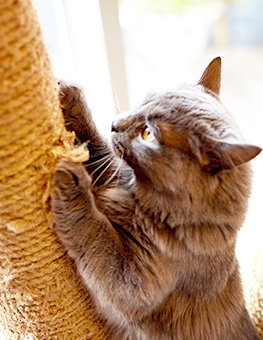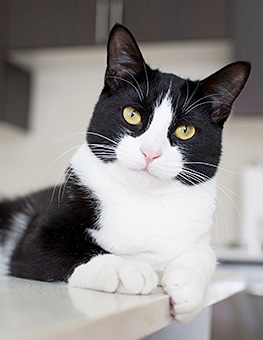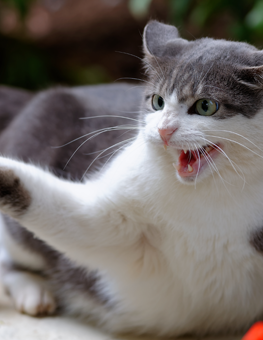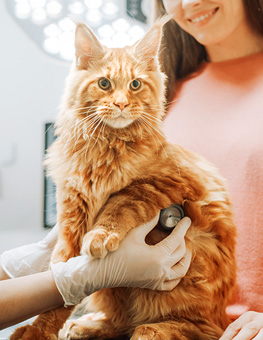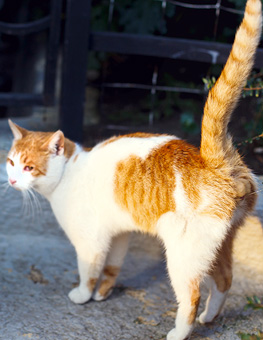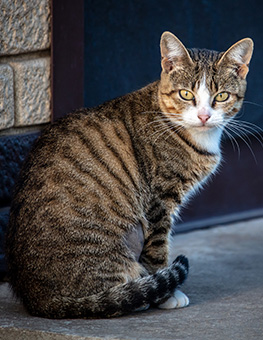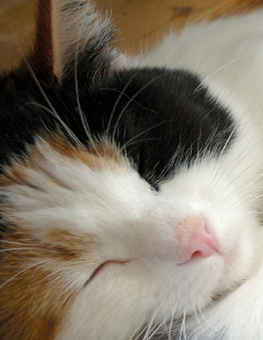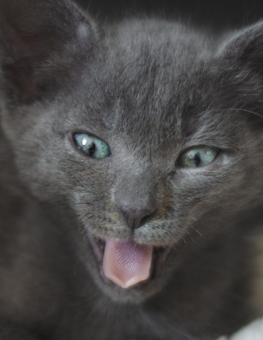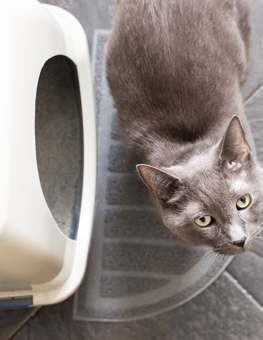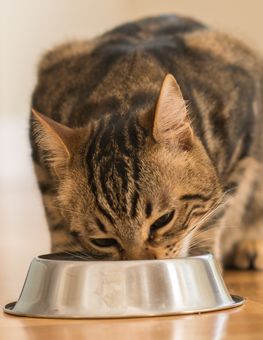Teaching Your Cat Not to Scratch Furniture
These days, most people are aware of the horrible side-effects of declawing cats. Simply put, it’s far more than just a simple nail trim.
Alternatives to Declawing
During a declaw surgery, the cat’s toes are removed at the first joint, forcing them to walk on their knuckles unnaturally for the remainder of their life. This can cause the cat chronic pain and lead to litter box issues and increased biting, among many other behavior problems.

Regularly trim your cat’s nails is a humane alternative to declawing.
Learning to regularly trim your cat’s nails or using nail caps are humane alternatives to declawing.
Keeping Your Cat from Scratching Furniture
But even if you regularly trim your cat’s nails, he may still be capable of destroying your furniture. Stopping your cat from scratching furniture is a priority for most cat owners and a very common struggle. So how do you keep your cat from scratching furniture?
The answer is positive reinforcement. Instead of thinking about what you don’t want your cat to do, think about offering him an appropriate alternative and making that alternative way more fun and rewarding! The common mindset of thinking that we need to stop, rather than redirect an unwanted behavior leads many cat owners to use punishment-based techniques, like squirt bottles or yelling to stop their cat from scratching the couch.
Avoid Punishment
Simply put, punishment doesn’t work well for cats, especially when it comes to scratching. Cats need to scratch. It’s a normal, natural behavior. If you punish him for scratching your couch but don’t show him that using the scratching post is okay, you’ll accomplish one of two things. One, he will learn to just scratch the couch when you’re not around. Or two, he’ll move on to scratching something equally undesirable, like your carpet or another piece of furniture.
In order to understand what types of scratching items to offer your cat and how to make them appealing, we first need to understand why cats need to scratch.
Why Do Cats Scratch?
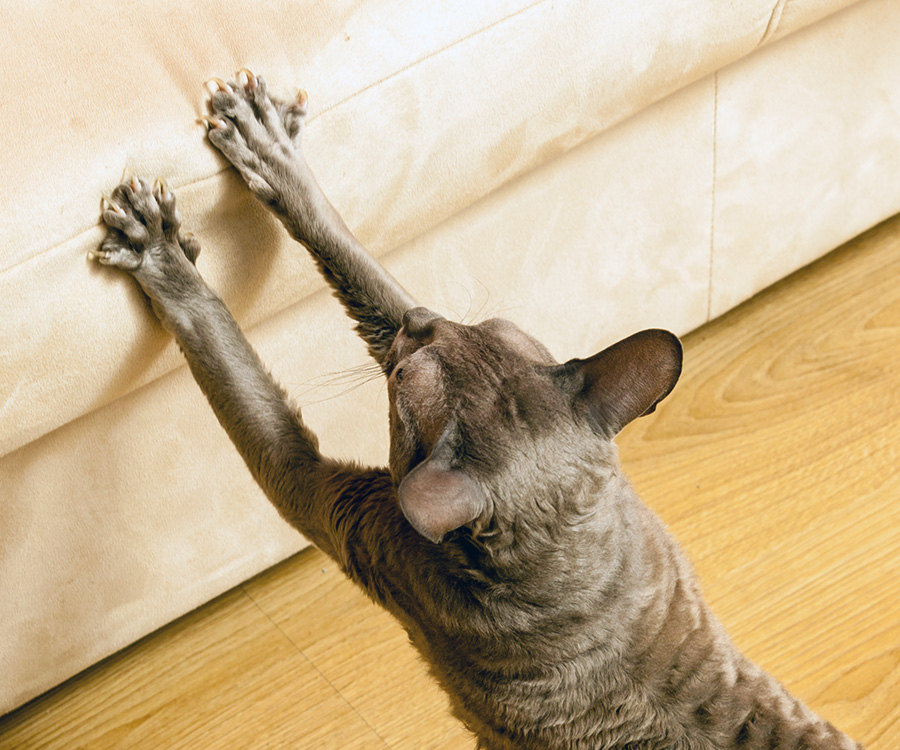
Cats use scratching to fully stretch out their entire bodies.
- Play. Have you ever noticed that after a big play session, or just when your cat gets the zoomies, he wants to go and scratch on something? Scratching can relieve tension, expel energy, and just be fun!
- Communication. Ultimately, your cat is leaving a message when he scratches – both visually and through scent glands located in his paws.
- Stretching. Your cat uses scratching to fully stretch out his entire body. Most cats want to be able to reach all the way up, so those posts that are flimsy or shorter than three feet tall probably won’t meet his needs.
- Nail Care. Because claws grow in layers, scratching can help peel off old claw sheaths and expose new claws underneath.
Scratching Posts Are Not One Size Fits All
Your cat is a unique individual, and as such, he has his own preferences as to what type of items he likes to scratch. It’s important to offer him lots of choices and find out what he likes the best. Remember, what we are giving him must be more appealing to use than your couch!
What Should You Keep in Mind When Choosing a Scratching Post?
- Choose the right angle. Scratching posts come in three types: vertical, horizontal, and sloped. Each cat will have a preference for how he wants to stretch out his body.
- It must be sturdy. If it wobbles, forget it. Your cat won’t want to use anything flimsy.
- What type of surface? Does your cat like carpet, sisal rope, wood, cardboard, or something else?
- Pick the right location. Don’t hide the post in a corner of the basement. They should be in high-traffic areas of your home, located near the furniture in order to give the cat an easy alternative.
- Make sure you have enough. You should have appropriate scratching items in every room to allow your cat to mark every corner of his territory.
How Can I Make My Scratching Posts More Appealing?
What if you’ve followed these tips and it isn’t enough? There are many ways to make your scratching items look even more attractive and encourage your cat to use them.
-

Initiate play with your cat near the scratching post to encourage them to use it.
Play with your cat. We talked earlier about how cats love to scratch during play. So, initiate some play and bring that wand toy close to the scratching post, that way when your cat jumps up to grab the toy, he sinks his claws into the post. He won’t be able to resist scratching, then.
- Try buying used. Because scratching is a form of territorial marking, if another cat’s scent is already on the post, your cat won’t be able to resist scratching on top of it. If you’d rather buy new, you can always leave it at a friend’s house who has cats for a week or so. You can always try the metal fork trick, where you scratch up the post yourself with a fork, tricking your cat into thinking it’s already been scratched on.
- Use catnip. You can use a catnip spray or simply sprinkle catnip along the surface to encourage your cat to check it out. Sometimes pheromone sprays can also entice your cat.
- Reward good behavior, and ignore bad behavior. Build positive associations with the scratcher. Give your cat treats around it and praise him for using it. If he does the wrong thing, calmly get his attention and call him over to you. After he stops scratching, praise him and bring out a toy or treats around the post you want him to use.
Channeling your cat’s scratching habit to an appropriate outlet is simple if you know the right tips and tricks! Follow these steps and your cat should stop scratching furniture in no time.





